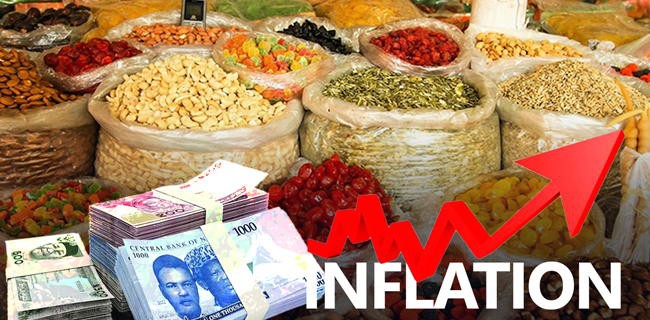854
By Daniel Adaji
Despite securing loans and investments worth billions of dollars to boost Nigeria’s agricultural sector, food prices continue to soar, fueling hunger for millions of citizens.
A report from the National Bureau of Statistics reveals that the country’s food inflation has skyrocketed by over 60.88 per cent, leaving citizens struggling to afford basic food staples. This comes amid promises of agricultural reforms and financial interventions by the government.
Recall that in May 2023, President Bola Tinubu’s administration promised to prioritize food security and pledged to cultivate 500,000 hectares of farmland across Nigeria to combat the worsening hunger crisis.
The government also secured a $3.334bn (N5.178tn) loan from the World Bank and African Development Bank to enhance agricultural productivity and support rural farmers. These efforts were aimed at reducing food prices and ensuring food availability.
“I am well aware that for some time now, the conversations and debates have centred on the rising cost of living, high inflation, which is now above 28 per cent, and the unacceptable high under-employment rate. To ensure constant food supply, security, and affordability, we will step up our plan to cultivate 500,000 hectares of farmlands across the country to grow maize, rice, wheat, millet, and other staple crops,” President Tinubu said during his new year address.
However, despite these efforts, food prices have continued to rise, largely due to multiple factors, including the removal of fuel subsidies, the devaluation of the naira, and insecurity.
In November 2024, food inflation hit 40 per cent and slightly lowered to 37.03 per cent in December, then 36.09 and 34.74 per cent in January and February of 2025, respectively, nearly double the level recorded in May 2023, when it was 24.82 per cent. The surge has affected millions, as Nigerians are forced to spend more to buy essential food items.
The challenges are compounded by rising fuel costs, which have caused an increase in transportation fees, further driving up the cost of food.
Experts point out that while loans from international financial institutions have been secured, these funds have yet to produce the intended effects on the ground.
Data from the United Nations Food and Agriculture Organization reveals the extent of Nigeria’s hunger crisis. Over 33 million Nigerians are expected to face food insecurity in 2025, about 7 million increase from 2024.
Despite the billions invested in agriculture, Nigeria’s food security remains precarious.
Agricultural analysts express scepticism about the effectiveness of the loans and government interventions.
Associate Professor Unekwuojo Onuche from the University of Africa, Bayelsa State, noted that while increasing food production is key to lowering prices, structural challenges persist.
“You increase supply so that supply increases and demand remains fairly stable. Prices will be forced to come down,” Onuche said.
However, he also acknowledged the time lag between investment and results in the agricultural sector, which could take several months to manifest.
Onuche further warned that rising fuel prices could offset any benefits from increased agricultural production.
“If you are giving farmers money to expand their businesses and you are increasing the cost of production, increasing the prices of oil, and that price is touching on every other thing, I don’t think you can succeed in keeping the prices of farm outputs down by simply increasing it,” he said.
The situation is worsened by issues in the supply chain. Tobi Awolope, an agricultural economist at the University of Agriculture, Abeokuta, pointed out that targeted smallholder farmers often miss out on the benefits of government interventions due to poor implementation.
“Various interventions have failed because the targeted small-holder farmers are not reached. Moreover, issues around supply chain and logistics resulting from the hike in fuel price is another main reason why interventions have zero or marginal effect on food prices,” Awolope said.
She also stressed the need for greater transparency in the allocation of interventions, suggesting that the government should focus on reducing fuel prices to ease the mobility of food.
“There should be full transparency in allocating and selecting beneficiaries for interventions, ensuring that farmers who are the main players in the agri-food system are reached and not just anybody,” Awolope stressed.



